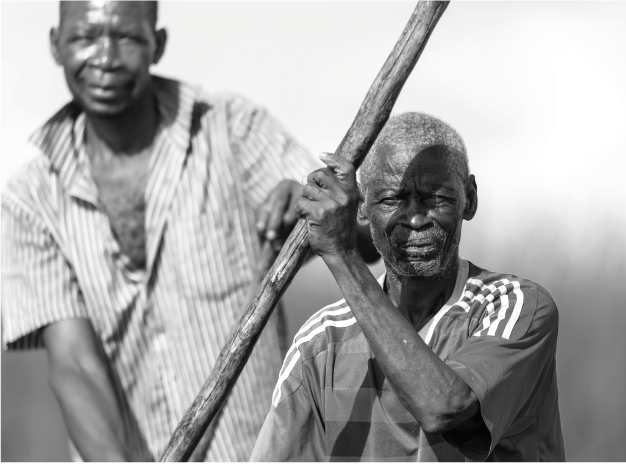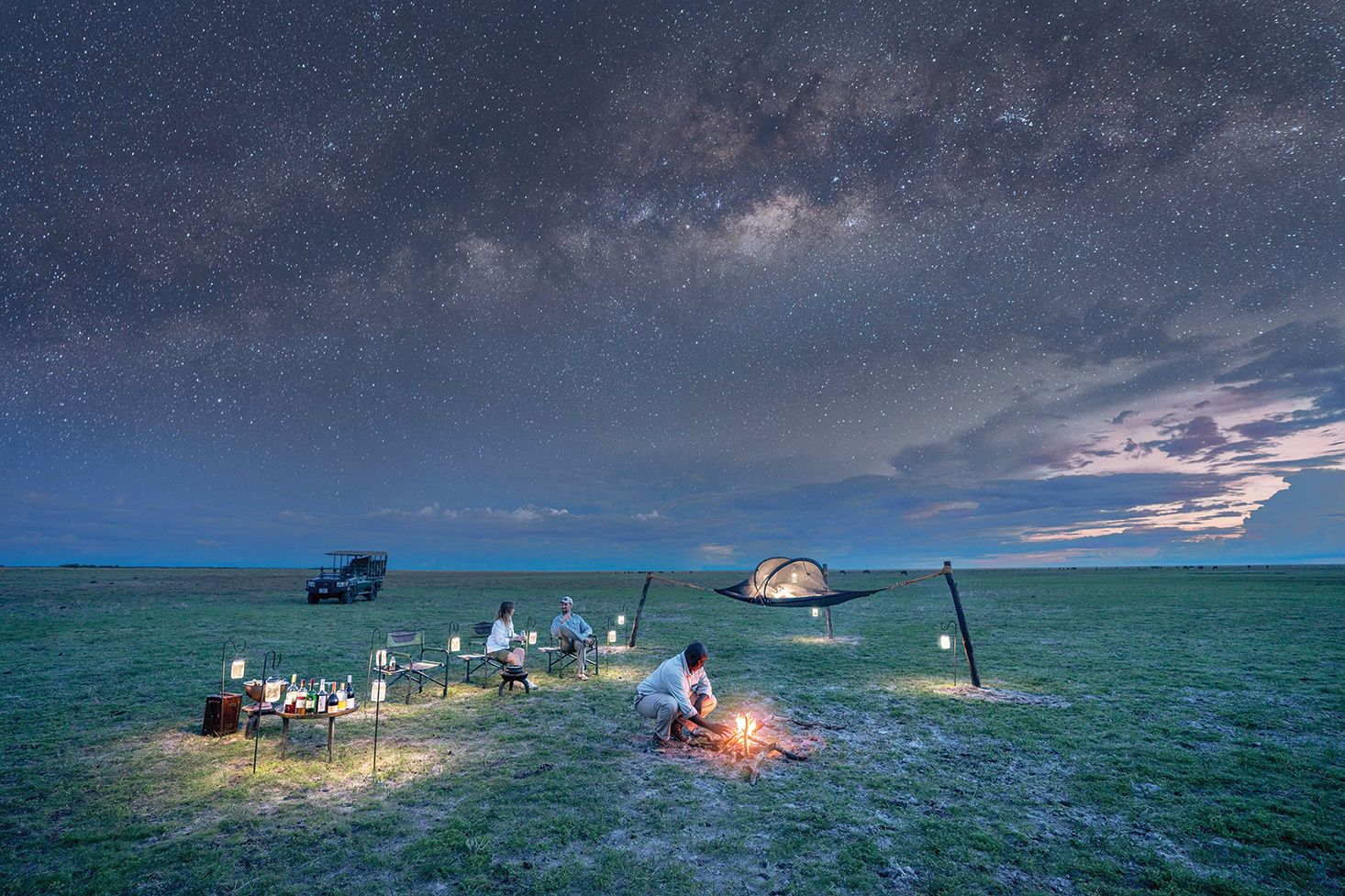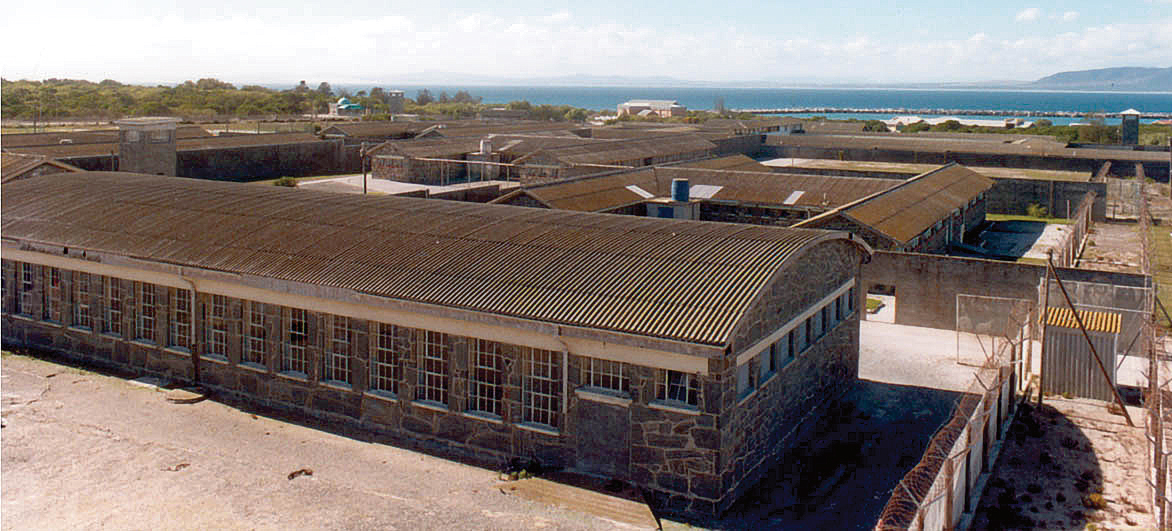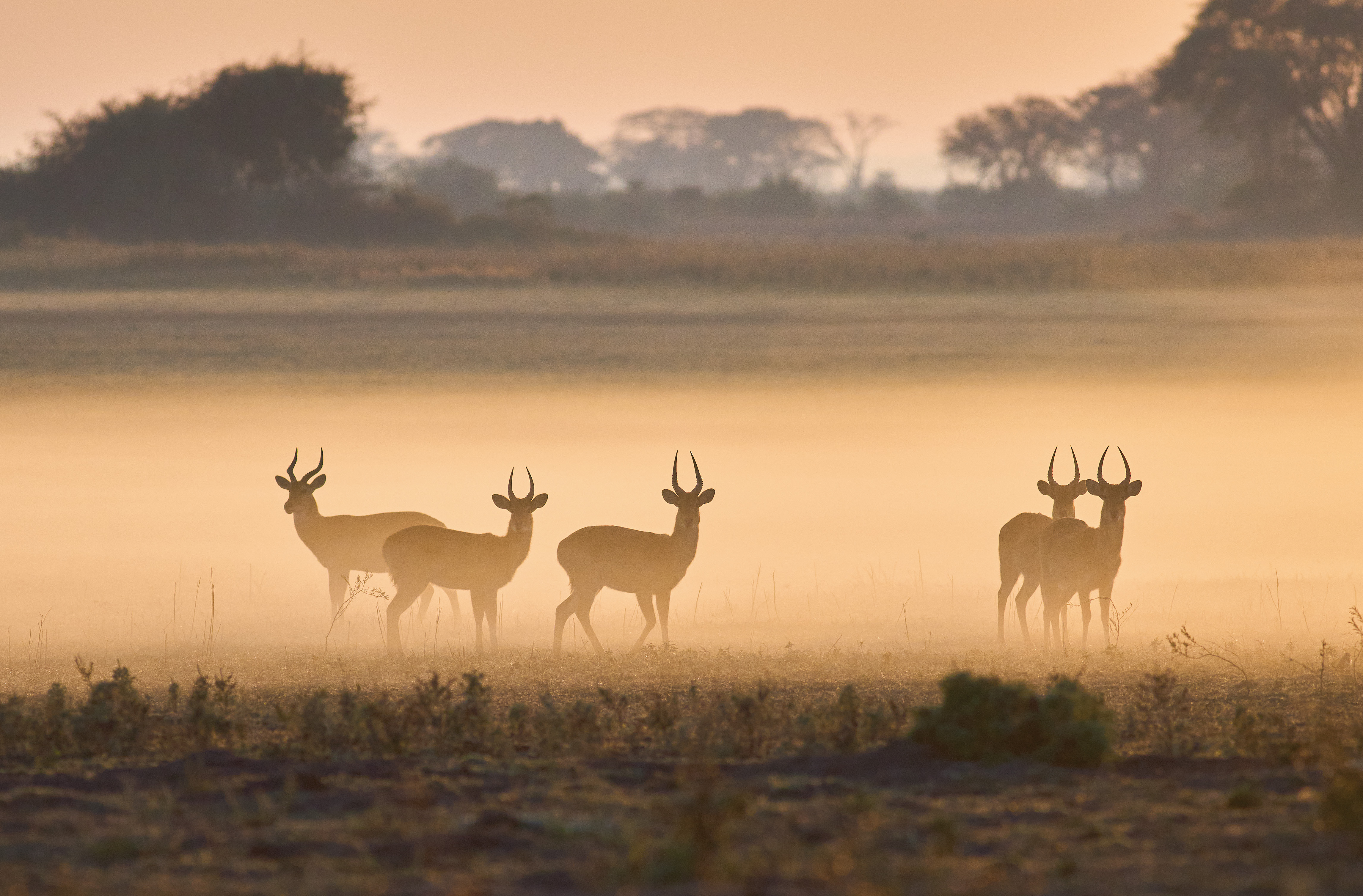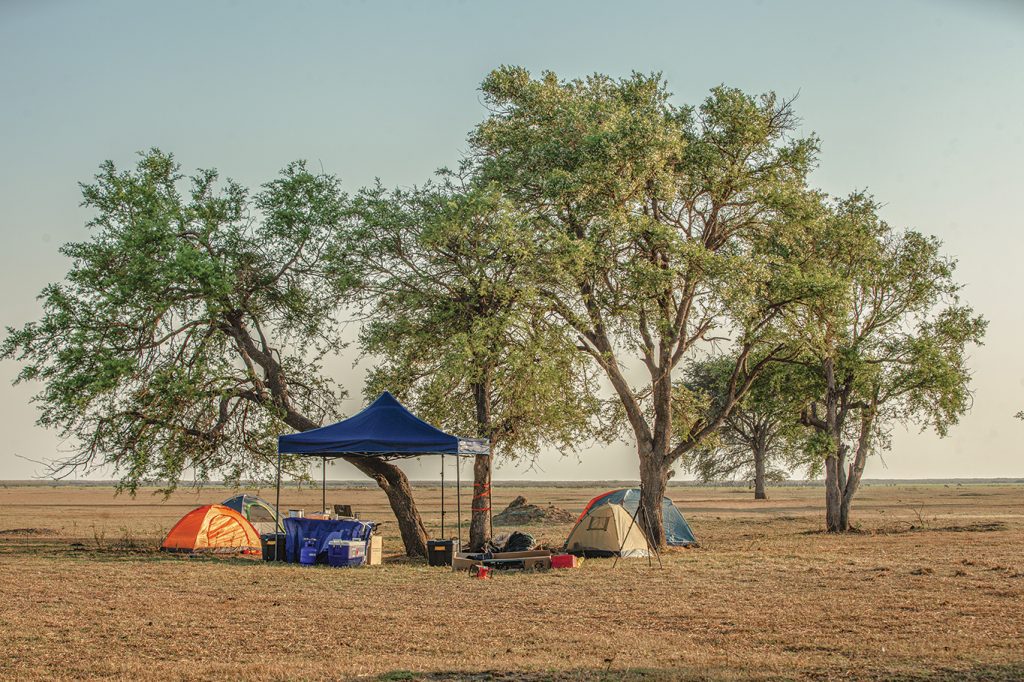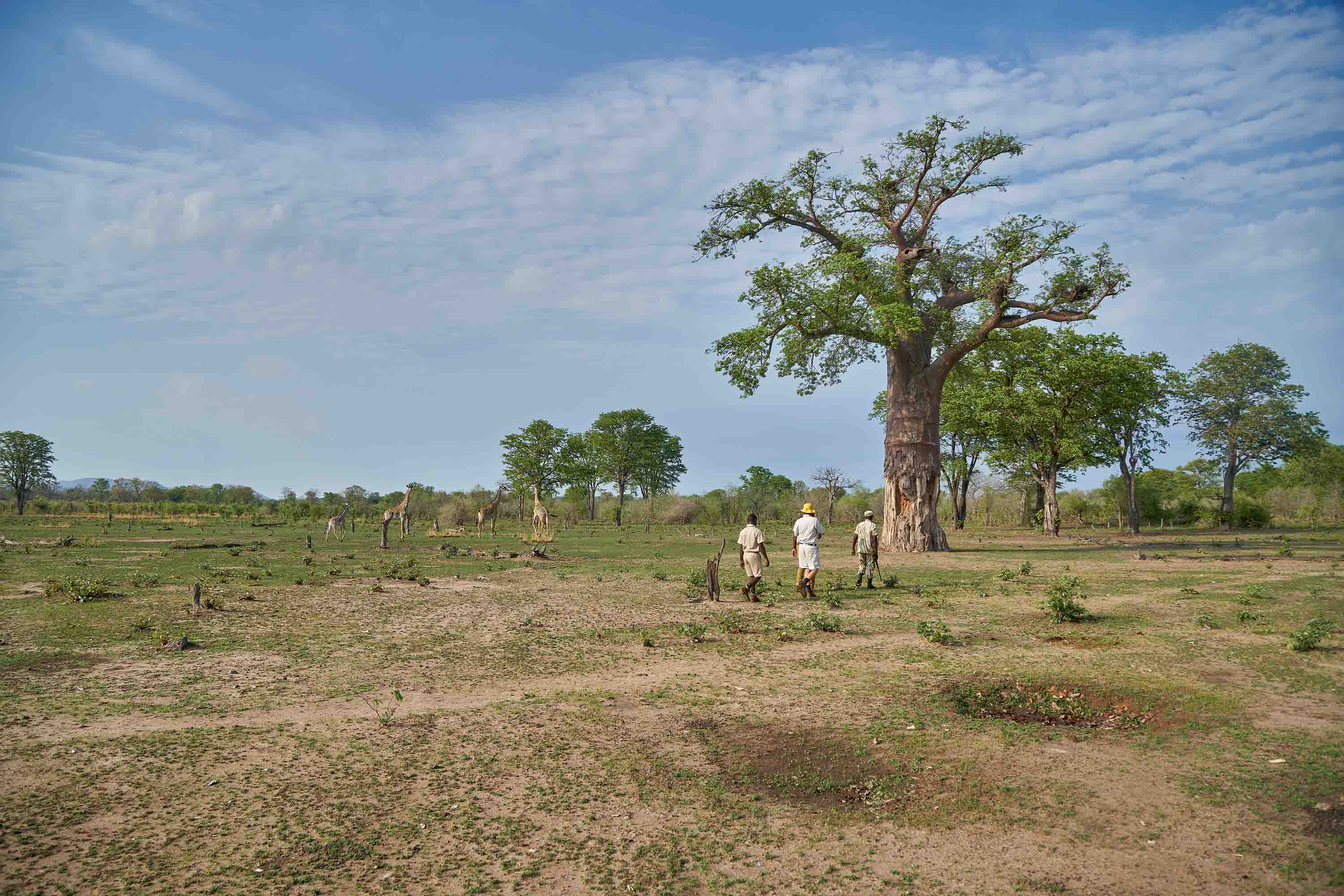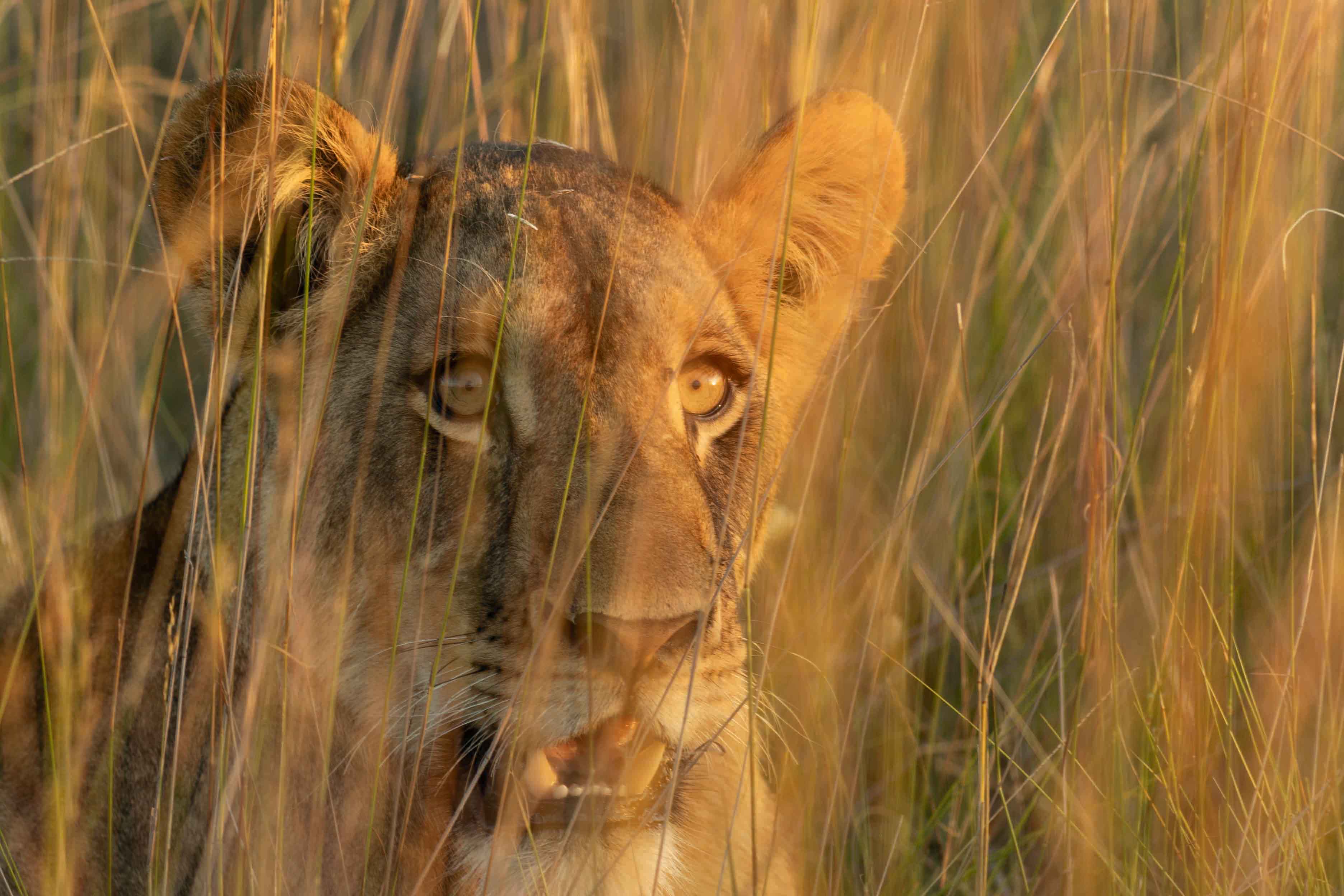In one of the world’s largest national parks, lives a group of individuals who despite all odds, make the Kafue National Park their home.
It’s 6 am on the banks of the Kafue River, and my eyes are fixed on the scene right ahead. In my right hand is a cup of the finest brew and on my face, a smile. Very few things can come close in comparison to the beauty of the Zambian sunrise towards the end of the rainy season. Ernest Hemmingway famously said, “I never knew of a morning in Africa when I woke up that I was not happy,” and I couldn’t have agreed more. Before my eyes, a scene so majestically poetic was unfolding. The soft morning sun illuminated the river mist, the lone calm hippo peeks out of the still river water, lilac-breasted roller fly overhead, and the treetops radiate a golden green. There is nothing more peaceful.

I was joined by our guide Martin, my self-proclaimed pro-photographer friend and another, who offered us entertainment in way of curious questions. I remember getting envious thinking about how lucky our guide Martin is, for during his lifetime, he had experienced the majesty of the Kafue in all its seasons. But Martin, a middle-aged man, small in stature but big in heart, was not your average guide. He was an expert on all things bush, and whose guiding skills were matched only by his abilities to share stories collected over the three decades spent as a guide in the southern part of the Kafue National Park. There was no animal, tree or insect he struggled to identify by sound and name.

We took in a few more minutes of the surrounding beauty before preparing for our game drive. Our hopes of sighting the elusive big cats amongst the tall elephant grass were low. After all, this was the wet month of March, but that was not enough to stop us from trying!

“It would be wise to cover up before we start, tsetse’s like going for the ankles and neck,” said Martin, which reminded me of the agony of being bitten by several of them earlier in the year. We proceeded with covering all exposed areas of our skin with thick clothing. That consisted of a ski mask, scarf, hat, jacket, trousers and high ankle boots. An attempt to curb any attacks and, more importantly, to douse our anxiety.

We take a short boat ride over the calm waters, the aluminium boat makes quick work piercing through the morning mist to reach the other side of the river, where the Pinnon Lodge safari vehicle awaited us. Excited by the prospects of sighting animals, we hastily move the camera equipment and lifesaving coolers to our vehicle.
Cameras in hand, we set off on our mission of capturing one or all of Zambia’s elusive big 5. An hour in, and Martin brings the vehicle to a stop, “Leopard” he says. Excitement fills the air; the chances of sighting a leopard at this time of the year were indeed slim. Our excitement, however, was short-lived. The leopard he was referring to was a species of tortoise with markings on its shell similar to that of the big cat. Despite our minor disappointment, we seized the opportunity to take close-up shots of the heartwarming creature.
Armed with our first shots of the game drive, we were off again. Up ahead, a troop of vervet monkeys lay in the middle of our dirt track, participating in social bonding through grooming. “Monkeys usually clean each other’s fur from dirt, lice and other debris and sometimes even eat the lice!” explained Martin. We take a few shots and decide to keep pushing ahead in search of the larger mammals.

As time passes, so do our chances of seeing any of the larger animals. Up ahead, a safari vehicle belonging to another lodge approaches, its occupants inform us that three kilometres north of our position 600 buffalos were sighted crossing the park. Fortified by this news, Martin wastes no time reaching the herd, where we spend 30 minutes observing the remaining buffalo complete the crossing. All the while our hands and arms were busy shooing away what seemed like the entire population of Zambia’s tsetse flies, going for the only exposed parts, our eyes!
With the crossing complete, we decide to end our drive and head back to the lodge. Relieved by the prospect of catching a break from the irritatingly incessant tsetses, we head back to the river where we meet up with Martin’s colleague, Passmore. Passmore, who had been working at Pinnon Lodge since its inception, was a man of few words. “The interesting thing about Passmore is that he is the third brother from his family to work at Pinnon,” Martin informs us as we pull in. “Where are his brothers?” I asked. Martin replied, “He lost both his brothers to crocodile attacks.” Flabbergasted, I asked myself whether these unfortunate scenarios are commonplace in these parts, a full-time city dweller myself, it was hard to imagine that it was.

The sun was now overhead, we load the boat and make our way back to the lodge. I think about what other stories I will hear during this trip. Hidden in the banks, protected from the midday sun by the tall swaying grass, we spot two fishermen in a small dugout canoe reeling in their midday catch. Dotted around the game management area are small fishing villages consisting of seven to 15 individuals. They typically stay in makeshift huts, which sometimes, depending on the water levels, are often dismantled and moved to the drier patches of land. They also have the added task of successfully navigating the dangers of sharing the waters and land, with the deadly animals that inhabit them.
At the lodge, we are seated at our table by Njokwa, the head chef, the table ideally placed in the middle of the observation deck is meticulously laid out. The main meal, Njokwa’s rendition of chicken quiche and roasted vegetables…sublime! For dessert, homemade coconut ice cream that had everyone asking for seconds. Njokwa’s mild-mannered disposition and inconspicuousness would make most people doubt his abilities in the kitchen, but I can wholeheartedly attest that his skills would put some of Lusaka’s top restaurants to shame. His food was a memorable highlight of our trip.
After a long nap, we decide to sit on the comfortable and very blue lawn chairs overlooking the river. Where we enjoy a cold beverage and a balani happily rolled for us by our accommodating barman Adrian. Balani is the local name for smooth tasting, hand-rolled, locally grown tobacco that is painstakingly hanged and dried for days by local villagers residing around the park. They are often rolled and consumed in notebook paper.
We pass the time by pointing out the birds flying on the horizon and getting educated on the names of the different species by our photographer friend, who having frequented the Kafue on multiple occasions and befriended several guides, was knowledgeable in all things avian.
Moments pass, and we spot a log-like creature floating on the river close to where we sat; a crocodile! Having not seen one swim in the wild before, I jump on the opportunity to photograph it from above, using my handy drone. The crocodile not minding the buzzing mechanical bird hovering just a metre above it performs acrobatics consisting of multiple rolls and dives, akin to Olympic synchronised swimmers.

With sunset upon us, my eyes are once more fixated on the beautiful scene before me. The sun-washed river sparkles and the distant clouds are ablaze in a concoction of fiery yellow and red. On the other side of the river, the colors of the trees dim. Martin prepares the campfire, and we position ourselves around it and continue soaking in the scenery. Minutes pass with no words spoken.
We converse about our fascination with nature and how lucky we are to experience it in its raw form, on what we believe is the most beautiful continent on earth. We compare ourselves to people living in the more “developed” parts of the world and jointly agree that we would rather have this over anything built by man…a backyard like no other.
Overhead, the night sky is dotted by a plethora of stars that proceed to brighten further with time. Being an amateur astrophotographer who unfortunately spends a good portion of his life in the big city, this was a welcome sight! Excited at the prospect of impressing my friends, I name a few of the stars and nebulae visible in the night sky. My passion renewed thanks to having no major source of artificial light in a radius of 100 kilometres.

Now fully sedated by the utter beauty, Martin, a storyteller at heart, tells us his most hair-raising story of all. “Some years back, I was walking in the bush with my axe, as a traditional boy would do. I came across a small plain that I decided to cross. As I approached the end of the plain, I heard something growling in the distance but I was not sure whether it was an elephant or lion, so I walked over to a small tree and shook it to scare whatever was out there. The noise stopped, and I continued on my walk. A few metres in I find vervet monkeys playing beneath a tree, which put my mind at ease because monkeys would not play on the ground if a lion is close. Moments later, I was stopped in my tracks by an unmistakable growl. A few metres ahead to the left of where I was standing, a big male lion appeared. He was flashing his teeth like a dog trying to scare you. I thought, oh now I am in trouble! I looked on the ground to find something to throw at him and picked up a dry fallen branch which I flung at the predator but missed entirely, hitting a tree instead. The sound it made scared the lion, who started to run away into the thickets only to stop, turn around and attempt to charge again. At that time, I had already picked up another fallen branch which I again flung at him. But again, I missed, and again the lion ran away only to charge at me once more. At this point, I gave up on throwing branches. I dropped my axe and started shouting, waving and clapping my hands to scare him, but the lion stood his ground and growled at me, preparing to make his move. Witnessing this, my shouting and clapping got louder, HA HAI HAI! I shouted loud enough to scare it off for what I hoped was the last time. As it ran away, I quickly picked up my axe and headed towards the village, all the while looking behind my shoulder. I got to the village and told my mother what had happened, she shouted at me repeatedly ‘don’t walk in the bush alone!’ I said to her ‘I am not scared of the bush’. That night as I lay in bed and thought about what had happened, I got scared and thought about how lucky I was to escape. But when I got up the next day, that fear was gone,” narrated Martin. The look on everyone’s faces gathered around the campfire said it all. Martin, noticing our awe says, “I have another story like this involving an elephant!”

I know of people who have experienced traumatic stress disorders for much less. It was evident that Martin and some of the others with whom he shares the land are of a different breed. An ordeal of this kind would prompt most people to avoid the bush entirely. Martin and his peers instead committed their lives to it.
At that point, I came to a significant realisation; visiting national parks to look at the fauna and flora is only part of a bush experience. The other part, and what might arguably be the most essential part, is listening to the stories of the people who live and work around them…like the humans of the Kafue.
Images by Karthik Jayaprakash
